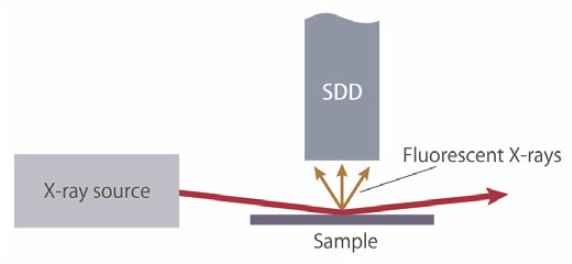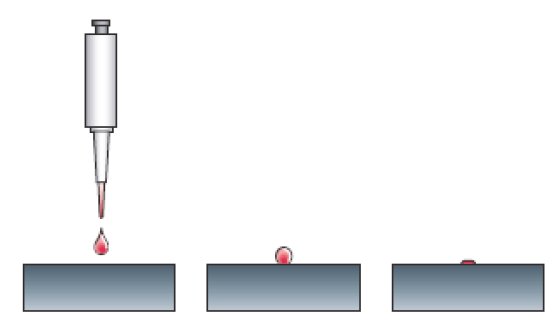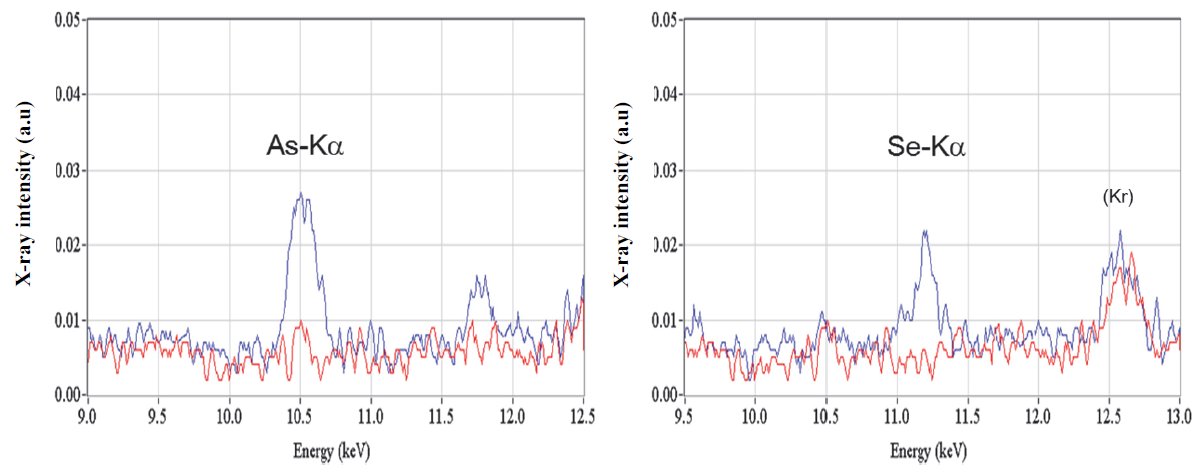Ultratrace Analysis of Aqueous Liquids
Introduction
An incident X-ray beam impinges upon the sample at a shallow angle resulting in virtually complete reflection of the excitation beam away from the silicon drift detector (Figure 1). This affords dramatically reduced background contributions in the measured energy dispersive X-ray fluorescence spectra. Ultratrace elemental analysis of the liquid sample becomes possible using the NANOHUNTER II and “Drop and Dry” sample preparation technique.

Figure 1: TXRF principle
Measurement and results
According to standards for hazardous pollutants in effluent, set by the Ministry of the Environment in Japan, arsenic (As) and selenium (Se) limits are set below 0.1 mg/L. The spectrum of 10 ppb Se in water solution clearly shows a prominent Kα peak (blue spectrum) relative to the background (red spectrum).
From this measurement, the calculated lower limit of detection (LLD) is about 0.8 ppb. The sample was easily prepared by pipetting 10 µL of aqueous solution onto a glass substrate followed by drying.
Large numbers of samples may be quickly prepared and measured with this “Drop & Dry” sample preparation technique (Figure 2).

Figure 2: “Drop and Dry” preparation

Figure 3: Spectra of 10 ppb As and Se in the aqueous solution

Contact Us
Whether you're interested in getting a quote, want a demo, need technical support, or simply have a question, we're here to help.
